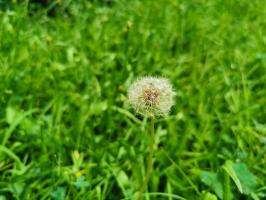What Do Water Treatment Plants Do with Poop?
Water treatment plants are responsible for treating the wastewater coming from households, businesses, and industries. Wastewater includes not only water from sinks, toilets, and showers but also human poop and other types of solid waste generated by individuals and communities. But what do water treatment plants do with poop? Let's explore the different methods and technologies used in wastewater treatment.
Sewer Collection System
The first step in wastewater treatment is the sewer collection system, which transports the wastewater from homes and buildings to the treatment plant. The sewer system is a network of underground pipes that rely on gravity and pumps to move the wastewater. In some cities, like San Francisco, the sewer system is a combined system that handles both wastewater and stormwater. In other cities, like New York, the sewer system is separated into two systems to prevent the overflow of untreated wastewater into the rivers during heavy rainfalls.
Primary Treatment
The wastewater arrives at the treatment plant and undergoes primary treatment, which involves the removal of large solids and debris from the water. Primary treatment can include the use of screens, grit chambers, and sedimentation tanks. The goal is to remove as much of the solid waste as possible before the water moves on to the secondary treatment.
Secondary Treatment
The next step is secondary treatment, which focuses on reducing the concentration of suspended organic matter and nutrients present in the wastewater. Secondary treatment can include a combination of biological and chemical treatments. One of the most common methods is the activated sludge process, which involves the use of bacteria to consume the organic matter. The bacteria form a "floc" that settles at the bottom of the tank, and the clear water on top is sent to the next treatment stage. Another method used in secondary treatment is the trickling filter, which uses rock or plastic media to grow bacterial colonies that break down the pollutants in the wastewater.
Tertiary Treatment
After secondary treatment, the water goes through tertiary treatment to remove any remaining pollutants and to disinfect the water before it is discharged into the environment or reused. Tertiary treatment can include the use of advanced filtration systems, such as microfiltration and reverse osmosis, as well as chemical treatments, such as chlorination and UV radiation. The goal is to make sure the water is safe for both human and environmental health.
Biosolids Management
So, what happens to the poop and other solid waste removed during primary treatment? The solids, also known as biosolids, are treated separately from the water. Biosolids management can include the use of anaerobic digestion, composting, and land application. In anaerobic digestion, the solids are broken down by bacteria in oxygen-free tanks, and the resulting biogas can be used as a source of energy. Composting involves the use of oxygen to break down the solids, and the resulting material can be used as fertilizer. Land application involves the use of biosolids as soil conditioners on agricultural land.
In Conclusion
Water treatment plants play a critical role in ensuring that our communities have access to safe and clean water. While the process of treating wastewater and poop can be complex and vary from region to region, the goal remains the same: to protect public health and the environment. By understanding how our water treatment systems work, we can all do our part to support efforts to conserve and protect our precious water resources.

 how many times do yo...
how many times do yo... how many planted tre...
how many planted tre... how many pine trees ...
how many pine trees ... how many pecan trees...
how many pecan trees... how many plants comp...
how many plants comp... how many plants can ...
how many plants can ... how many plants and ...
how many plants and ... how many pepper plan...
how many pepper plan...
































